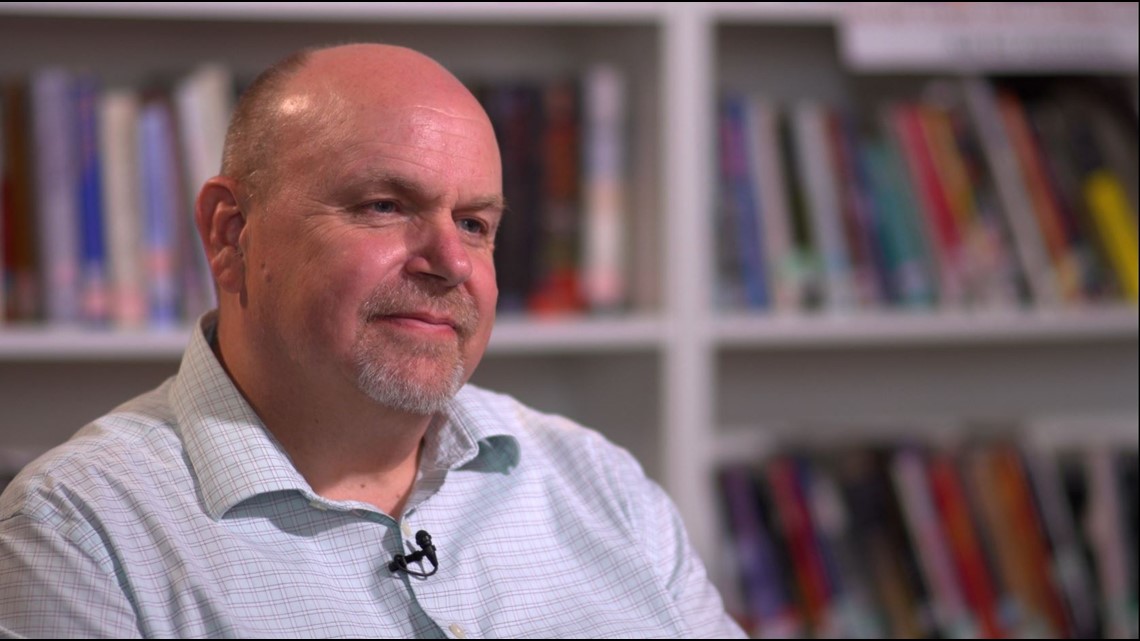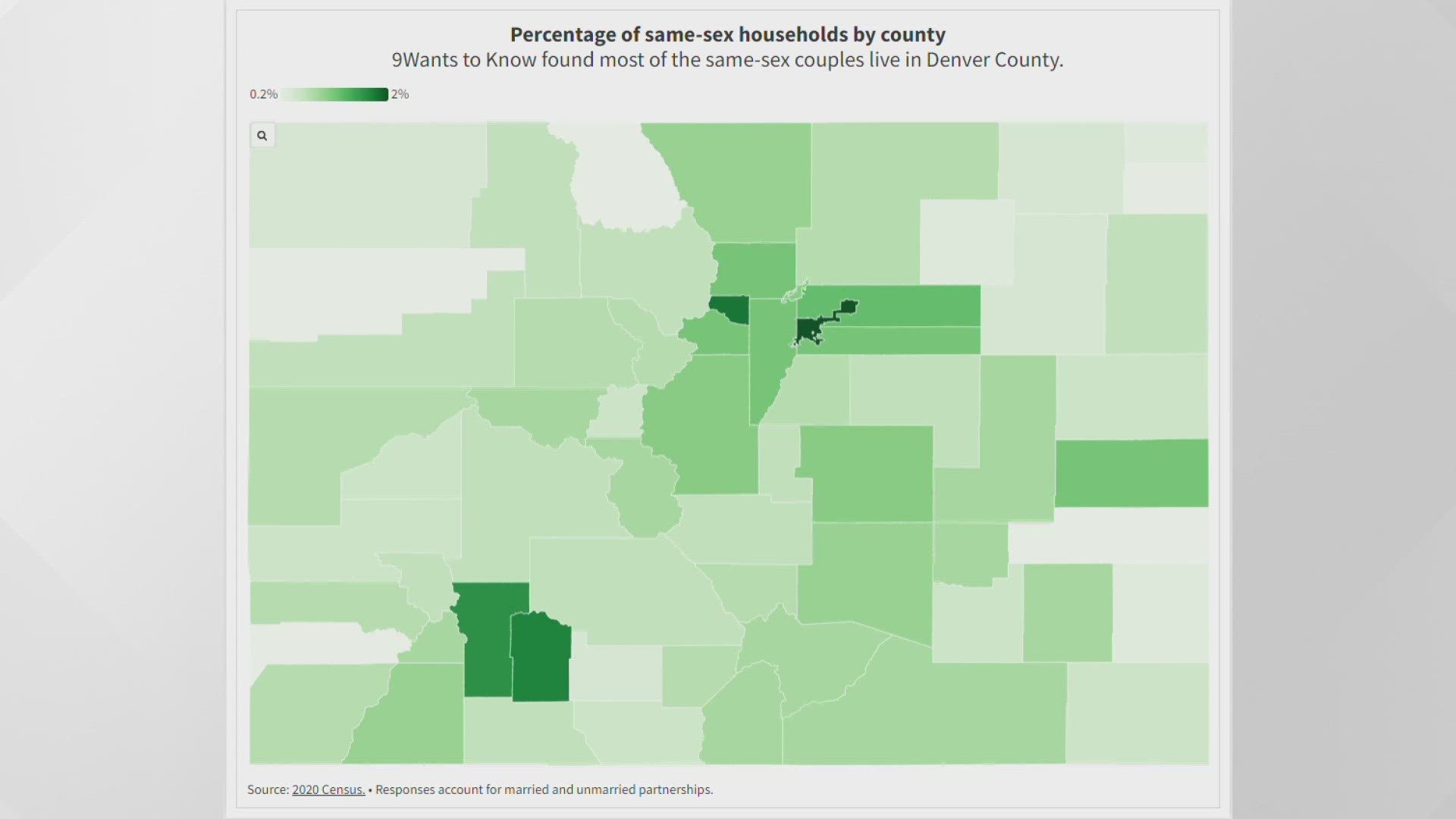DENVER — New census data found that 1% of Colorado households have a same-sex partnership.
The data shows there are 24,562 same-sex households in the state. This is the first time same-sex couples have been tracked in the decennial Census, according to a Census spokesperson.
Rex Fuller, CEO of the Center on Colfax, said it's important to track the number of same-sex couples to make sure the community gets the resources it needs.
Graphic created by Zack Newman.
"It's really reassuring to me to know that someone's just recognizing my existence in some fashion in the Census,” Fuller said. “You know for many years, marriage between people of the same gender was not even legal."
The Center on Colfax is an LGBTQ+ community center in Denver and is the largest of its kind in the Rocky Mountain region, according to the organization’s website.
Fuller said he knows of couples who have been together for decades but were just recently married.
“Now being able to be counted as a married couple can be very validating,” he said.


Most of the same-sex households were in Denver and neighboring counties, but the data shows 13 counties where at least 1% of households had a same-sex partnership.
The highest proportion of same-sex couples lived in Denver County, where 2% of the 317,326 households had same-sex couples. There was a notable same-sex household population in Gilpin County. In Gilpin, nearly 2% of households – about 47 households of 2,608 total – have a same-sex partnership.
Graphic created by Zack Newman.
Fuller said the inclusion in the Census could lead to inclusion in other places – like long-term care. He said some members of the community who lived their lives “out” feel as though they “need to go back into the closet” to get care. He hopes these numbers will help health administrators change things.
“The way many of them operate are planned for heterosexual people,” Fuller said. “And so they don’t necessarily accommodate people who are part of the LGBTQ community because no one’s counted them until now.”
Colorado had the 14th-highest percentage of same-sex households, with 1.09%.
Graphic created by Zack Newman.
The 2010 Census previously estimated the number of same-sex couples, but the Williams Institute at the University of California Los Angeles found evidence that the numbers were likely over-inflated and filled with errors from different-sex couples that filled out the survey incorrectly.
The 2020 Census included a new question that identified whether the respondent lived with a same-sex married or unmarried partner for the first time, according to a Census spokesperson.
"Because same-sex couple households are a much smaller proportion of all coupled households than opposite-sex couples, this small amount of reporting error affected overall estimates of same-sex couple households," a Census spokesperson wrote in a post. "These changes were implemented to address these inconsistencies and improve estimates of same-sex couple households."
Fuller said he wants to see additional questions in future surveys to document those who are not married but are a “sexual or gender minority.”
Reach investigative reporter Zack Newman at 303-548-9044. You can also call or text securely on Signal through that same number. Email: zack.newman@9news.com. Call or text is preferred over email.
SUGGESTED VIDEOS: LGBTQ+ Stories

